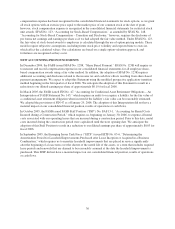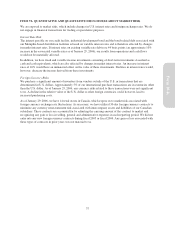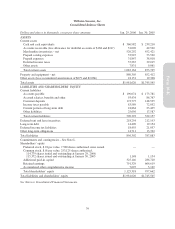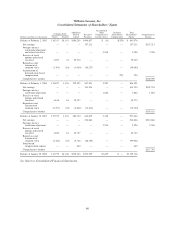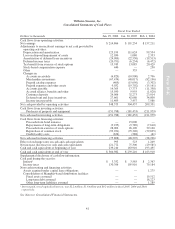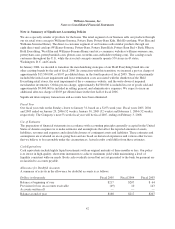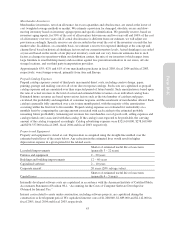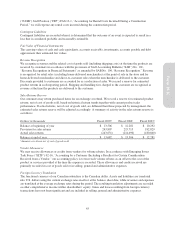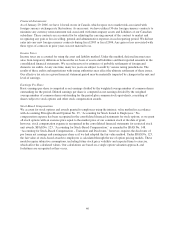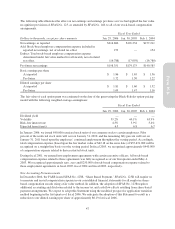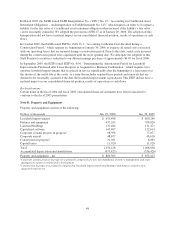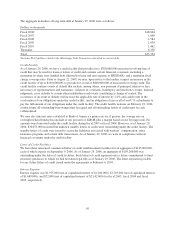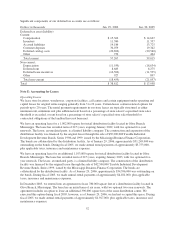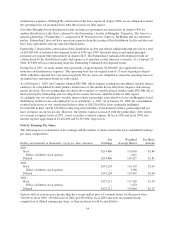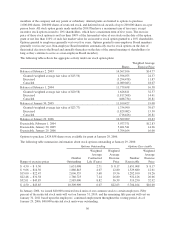Pottery Barn 2005 Annual Report Download - page 58
Download and view the complete annual report
Please find page 58 of the 2005 Pottery Barn annual report below. You can navigate through the pages in the report by either clicking on the pages listed below, or by using the keyword search tool below to find specific information within the annual report.Financial Instruments
As of January 29, 2006, we have 14 retail stores in Canada, which expose us to market risk associated with
foreign currency exchange rate fluctuations. As necessary, we have utilized 30-day foreign currency contracts to
minimize any currency remeasurement risk associated with intercompany assets and liabilities of our Canadian
subsidiary. These contracts are accounted for by adjusting the carrying amount of the contract to market and
recognizing any gain or loss in selling, general and administrative expenses in each reporting period. We did not
enter into any new foreign currency contracts during fiscal 2005 or fiscal 2004. Any gain or loss associated with
these types of contracts in prior years was not material to us.
Income Taxes
Income taxes are accounted for using the asset and liability method. Under this method, deferred income taxes
arise from temporary differences between the tax basis of assets and liabilities and their reported amounts in the
consolidated financial statements. We record reserves for estimates of probable settlements of foreign and
domestic tax audits. At any one time, many tax years are subject to audit by various taxing jurisdictions. The
results of these audits and negotiations with taxing authorities may affect the ultimate settlement of these issues.
Our effective tax rate in a given financial statement period may be materially impacted by changes in the mix and
level of earnings.
Earnings Per Share
Basic earnings per share is computed as net earnings divided by the weighted average number of common shares
outstanding for the period. Diluted earnings per share is computed as net earnings divided by the weighted
average number of common shares outstanding for the period plus common stock equivalents, consisting of
shares subject to stock options and other stock compensation awards.
Stock-Based Compensation
We account for stock options and awards granted to employees using the intrinsic value method in accordance
with Accounting Principles Board Opinion No. 25, “Accounting for Stock Issued to Employees.” No
compensation expense has been recognized in the consolidated financial statements for stock options, as we grant
all stock options with an exercise price equal to the market price of our common stock at the date of grant,
however, stock compensation expense is recognized in the consolidated financial statements for restricted stock
unit awards. SFAS No. 123, “Accounting for Stock-Based Compensation,” as amended by SFAS No. 148,
“Accounting for Stock-Based Compensation – Transition and Disclosure,” however, requires the disclosure of
pro forma net earnings and earnings per share as if we had adopted the fair value method. Under SFAS No. 123,
the fair value of stock-based awards to employees is calculated through the use of option pricing models. These
models require subjective assumptions, including future stock price volatility and expected time to exercise,
which affect the calculated values. Our calculations are based on a single option valuation approach, and
forfeitures are recognized as they occur.
46


